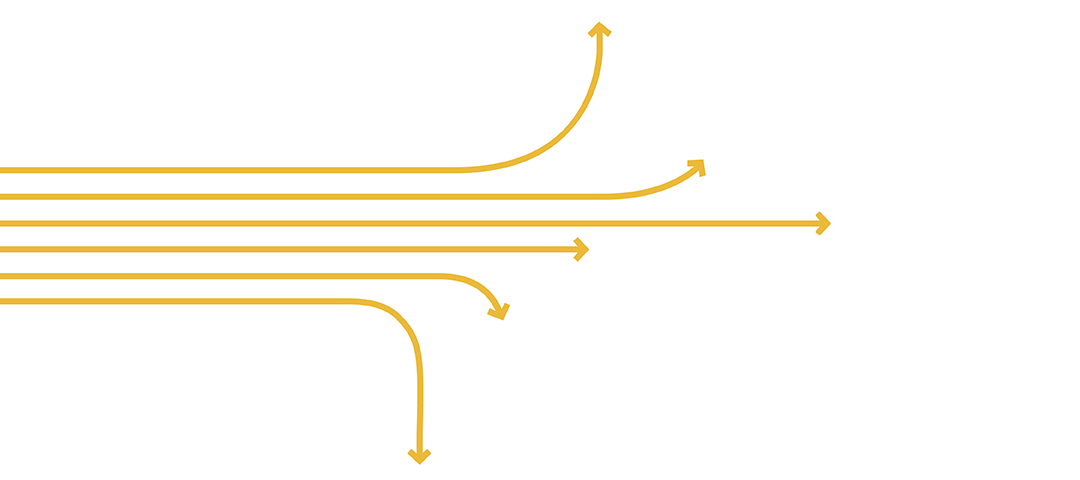The Future of Asia: Forces of Change and Potential Surprises – Supplementary Report

Infrastructure and Technology Advances: Key to Regional Integration
On this page
What is it?
Why is it important?
References
What is it?
The World Bank reports that in 2012 there were 128 projects underway in South Asia and 64 in East Asia and the Pacific, with the largest investment share in the energy sector.1 McKinsey calculates that across the Asian region, around US$8 trillion will be committed to infrastructure projects over the next decade.2 In the last three months of 2013, China invested US$50 billion into central Asian infrastructure projects.3
An important factor in regional integration is the physical and virtual connections between places.4 Other important factors include the elimination of trade barriers, more integrated financial markets and cooperation on matters of public benefit (e.g., coordinated disaster response, and anti-corruption measures). Infrastructure such as the rail networks planned for mainland Southeast Asia5 and the high speed rail planned in India are important for physically linking places. New trade routes can open up through infrastructure investments, such as the creation of a bridge between South Asia and East Asia through the development of Myanmar’s infrastructure.6 Shared energy and water infrastructure has the ability to both join countries in a common purpose and to cause significant tension over resources.
Why is it important?
The type and level of investment, as well as the ability to work together across borders will distinguish which areas of Asia rapidly grow and which ones will lag. As some countries start investing massively in the development of their neighbours’ infrastructure, integration may become synonymous with foreign economic influence (e.g., China in Laos, Thailand in Myanmar).7 More recently, China has proposed an Asian Infrastructure Development Bank to help coordinate foreign investment into the region. A key purpose of the proposal is to capture technical expertise from developed countries to speed up progress in industrialization and urbanization in Asia, especially in underdeveloped Southeast Asian countries (e.g., Laos and Myanmar). 8
At the same time, the advancement and uptake of technology (e.g., distributed energy, additive manufacturing, etc.) may lead to less use of roads and pipelines and provide new opportunities and challenges for integration. In a country like India, where millions of people do not have electricity, leapfrogging to a distributed system may undercut the need for investments in centralized infrastructure systems.9 The growing trend of e-commerce combined with drone delivery10 and the advent of 3D printing, may have a similar impact on transportation by reducing the volume of air, ground and sea shipping.11 12 As a result, disruptive technologies could potentially decrease the expected returns on infrastructure investments.
References
- “Private Participation in Infrastructure Database: Regional Snapshots.” The World Bank. Website. http://ppi.worldbank.org/explore/ppi_exploreRegion.aspx?regionID=2h(link is external)
- Tahilyani, N. et al. “Asia’s $1 trillion infrastructure opportunity.” McKinsey & Company. March 2011. http://www.mckinsey.com/insights/financial_services/asias_1_trillion_infrastructure_opportunity(link is external)
- Chu, B. “China’s $50bn spending spree on new Silk Road.” The Independent. October 2013. http://www.independent.co.uk/news/business/news/chinas-50bn-spending-spree-on-new-silk-road-8854793.html(link is external)
- “Regional Public Goods.” Asia Regional Integration Center, Asian Development Bank. Website. http://aric.adb.org/regional-public-goodshttp://aric.adb.org/regional-public-goods(link is external)
- “One night to Bangkok.” The Economist. September 2013. http://www.economist.com/blogs/banyan/2013/09/infrastructure-laos(link is external)
- “Connecting South Asia and Southeast Asia. Interim Report.” Asian Development Bank and the Asian Development Bank Institute. May 2013. http://www.adbi.org/files/2013.05.05.book.connecting.south.asia.southeast.asia.interim.report.pdf(link is external)
- “Better run through the jungle.” The Economist. July 2013. http://www.economist.com/node/21581660(link is external)
- Zongze, R. “Being Good Neighbours”. The Nation. October 2013. http://www.nationmultimedia.com/opinion/Being-good-neighbours-30216868.html(link is external)
- La Monica, M. “Can India’s Tata make cheap, distributed energy?” CNET. March 2011. http://news.cnet.com/8301-11128_3-20047974-54.htmlhttp://news.cnet.com/8301-11128_3-20047974-54.html(link is external)
- Guilford, G. “Australia and China are way ahead of Amazon in the commercial drone race.” Quartz. December 2013. http://qz.com/152788/australia-and-china-are-way-ahead-of-amazon-in-the-commercial-drone-race/(link is external)
- Burg, N. “Why 3D Printing Will Change How Businesses Deliver.” Forbes. September 2013.
- Dunphy, B. “What potential does 3D printing have for developing economies?” TED Conversations. May 2013. http://www.ted.com/conversations/18251/what_potential_does_3d_printin.html